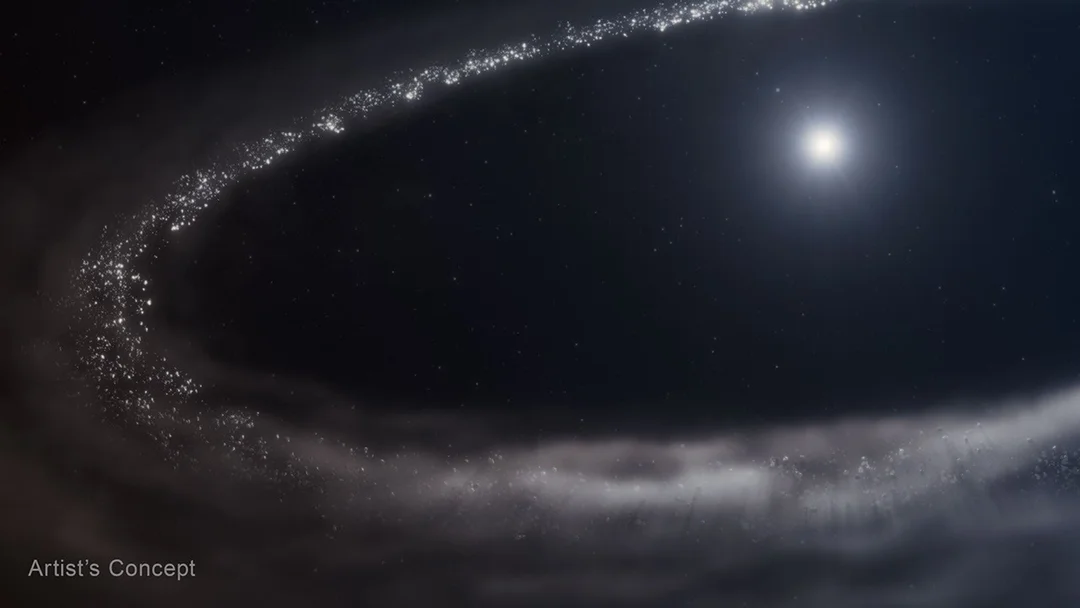
NASA’s Webb Telescope Detects Frozen Water in Distant Star System: A Major Milestone for Planetary Formation Research
In a groundbreaking discovery, NASA's James Webb Space Telescope (JWST) has definitively detected frozen water in a young star system 155 light-years away. This marks the first time astronomers have confirmed the presence of water ice in a debris disk orbiting a Sun-like star, offering crucial insights into the formation of planetary systems.
The findings, published in the journal *Nature*, reveal that crystalline water ice exists in the dusty debris disk surrounding the star HD 181327, a system estimated to be only 23 million years old. This discovery is significant because while water ice is abundant in our solar system, this is the first confirmed detection of frozen water around another star, suggesting a potential pattern in how planetary systems evolve across the universe.
A Kuiper Belt Analogue
Observations from the Webb telescope indicate a significant gap between the star HD 181327 and its debris disk, mirroring the structure of our own solar system's Kuiper Belt. This region is home to dwarf planets, comets, and other icy bodies.
"Webb unambiguously detected not just water ice, but crystalline water ice, which is also found in locations like Saturn's rings and icy bodies in our solar system's Kuiper Belt," stated Chen Xie, the lead author of the new paper from Johns Hopkins University.
Active Collisions and Dusty Snowballs
The system is highly active, with frequent collisions within the debris disk. These collisions release tiny particles of dusty water ice, perfectly sized for detection by the Webb telescope, these can be imagined as 'dusty snowballs' .
The outer area of the debris disk holds over 20% water ice, but this reduces towards the middle, where about 8% water ice was found. Close to the star, almost no ice was detected, likely due to vaporization by the star's ultraviolet light. "The presence of water ice helps facilitate planet formation," Xie added, suggesting that icy materials like these may ultimately be delivered to terrestrial planets developing the system.
Implications for Planet Formation
This discovery strengthens the idea that water ice plays a crucial role in planet formation. It influences the formation of giant planets and is delivered to rocky planets by comets and asteroids. With Webb's advanced instruments, researchers can now study these processes in ways impossible before, opening new avenues for understanding planetary system development.
The detection was made using Webb's NIRSpec (Near-Infrared Spectrograph), which is highly sensitive to faint dust particles. This instrument will continue to be instrumental in the search for and study of water ice in actively forming planetary systems across the Milky Way galaxy.
This marks a new era in our understanding of the cosmos. How will this discovery reshape our understanding of habitability in other systems? Share your thoughts in the comments below.